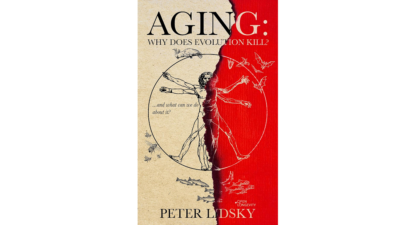A study published in Aging has shown that the removal of senescent cells through senolytics alleviates muscle degeneration in a mouse model of Duchenne muscular dystrophy.
A genetic disease with hallmarks of aging
Duchenne muscular dystrophy is caused by a mutation that gradually destroys the muscles, eventually becoming fatal as it destroys the diaphragm or heart. This is an X-linked genetic disease, so females can carry one copy of it without normally suffering from negative physiological effects; sufferers are almost always male. Previous research on a mouse model of severe Duchenne has found that this disease is also linked to RhoA signaling in senescent macrophages near the dystrophic muscles, triggering the senescence-associated secretory phenotype (SASP) and potentially making the problem worse [1].
The researchers also note that this is connected to normal aging: previous research has found that senescent immune cells contribute to other aspects of aging, including senescent cells in other organs [2].
However, a causal link between senescence and muscular dystrophy in this genetic disease had not previously been determined, and it was not clear if removing these senescent cells would offer any benefit against Duchenne. This research was conducted to fill that gap, testing if the well-known natural senolytic fisetin could improve the muscles of these mice.
Stem cells and senescent cells
Compared to their wild-type counterparts, the muscles of 8-week-old mice of this model have considerably less Pax7, a marker of muscle stem cells. Instead, they have much greater amounts of the senescence markers CD68 and SA-β-gal, which is nearly absent in wild-type mice of this age. CD68 and mTORC1 signaling, which is also a regulator of senescence, are also heavily present in the macrophages that reside in this skeletal muscle. As expected from senescent macrophages, the SASP was also present, including a variety of well-known inflammatory factors.
Culturing senescent macrophages next to healthy muscle stem cells was found to deplete the function of the stem cells, reducing their ability to form muscle somatic cells properly.
Fisetin to the rescue
Introducing fisetin into this cellular culture showed positive results. Fisetin effectively removed senescent macrophages, substantially decreasing the amount of CD68 and SA-β-gal in the cultures. The stem cells that had been negatively affected by these senescent macrophages recovered, and they were once again able to perform as normal.
Finally, the researchers tested the effects of fisetin on the Duchenne mouse model. Compared to the Duchenne mice in the control group, the treated mice had less fibrosis, substantially reduced biomarkers of senescence, and much more active stem cells. While these biomarkers were not improved to the levels of wild-type mice, they showed a marked improvement.
Conclusion
There were several limitations to this study. Like mouse models of Alzheimer’s, the mouse model of Duchenne may not perfectly mimic the actual disease. Murine, not human, cells were used for the cellular cultures, and senolytics that have shown enormous promise in mice are not always particularly effective in human beings. The physical performance of the mice was also not measured.
However, these results are notable from both an anti-aging perspective and the perspective of people interested in treating this particular genetic disease. If senescent macrophages are causing such harm in this case, they may also be doing the same in older people as well. Therefore, if these results hold true in human beings, strategies to destroy or convert senescent cells may be effective as a treatment against the age-related muscle degeneration known as sarcopenia.
[1] Mu, X., Lin, C. Y., Hambright, W. S., Tang, Y., Ravuri, S., Lu, A., … & Huard, J. (2020). Aberrant RhoA activation in macrophages increases senescence-associated secretory phenotypes and ectopic calcification in muscular dystrophic mice. Aging (Albany NY), 12(24), 24853.
[2] Yousefzadeh, M. J., Flores, R. R., Zhu, Y. I., Schmiechen, Z. C., Brooks, R. W., Trussoni, C. E., … & Niedernhofer, L. J. (2021). An aged immune system drives senescence and ageing of solid organs. Nature, 594(7861), 100-105.








